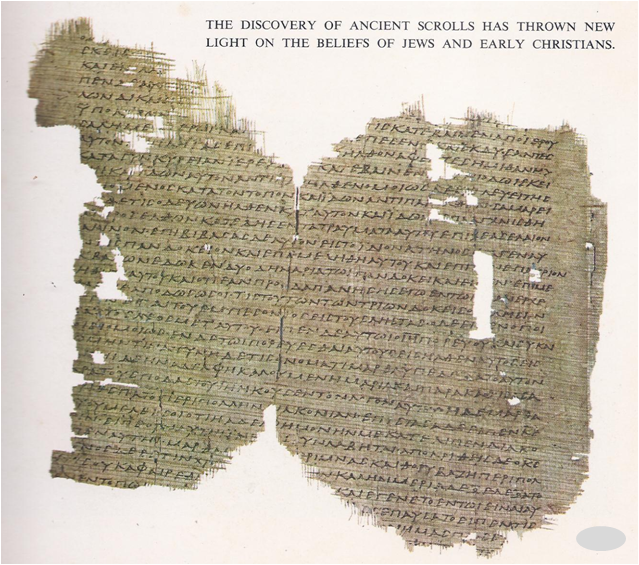Important events of early Christianity 6 B. C.- 400
6 B.C. Probable date of birth of Jesus in Bethlehem, Judea.
A.D. 24 Jesus is baptized by John the Baptist and begins his ministry.
A.D. 29 The Crucifixion of Jesus.
A.D. 30? Paul, while on the Way to Damascus to persecute the Christians, has a vision and is converted; he begins preaching.
A.D.45-47 Paul’s 1st mission takes him to several towns in Asia Minor where he founds churches.
A.D. 48 or 49 The first church council meets in Jerusalem and decides that non-Jewish Christians are not bound by the laws of Moses, opening the way for Gentile converts.
A.D. 50-53 Paul’s 2nd mission to Asia Minor and Greece.
A.D. 53-57 Paul’s 3rd mission.
A.D. 57 Paul is arrested in Jerusalem and taken to Rome to await trial before Caesar.
A.D. 64 Nero blames the fire of Rome on Christians and has many of them killed, including, according to tradition, Peter and Paul.
A.D. 133 Jerusalem is destroyed by Roman troops, making Rome one of the chief centers of the church.
A.D. 153 Justin writes his Apology defending the Christian faith.
A.D. 261 Emperor Gallienus issues the first edict of toleration for Christians, ending persecution for a time.
303 A new wave of persecution begins under Emperor Diocletian, continuing until his death in A.D. 312.
A.D. 324 Constantine, the first Christian emperor, begins to build a new capital at Byzantium.
A.D. 325 Constantine calls a church council at Nicea to discuss and settle the disputes about doctrine.
A.D. 379-395 Reign of Theodosius, who limits citizenship to Christians and outlaws other religions.
A.D. 382 Jerome begins his translation of the Old and New Testaments into Latin.
A.D. 386 Augustine is converted to Christianity and becomes a priest at Hippo in North Africa.
A.D. 390 Ambrose, bishop of Rome, forces Emperor Theodosius to do public penance for a massacre.
A.D. 400 The final arrangement of the New Testament is decided.
Important events in Byzantium and the Church A. D. 430 – 1453
A.D. 430 Augustine, now bishop of Hippo, dies.
A.D. 431 The Council of Ephesus marks the beginning of the split between the eastern and western churches.
A.D. 445 The western Emperor Valentinian III endorses the authority of the bishop of Rome, or pope; over the rest of the church.
A.D. 455 Vandals capture and sack the city of Rome.
A.D. 476 Romulus, the last western emperor, is deposed.
A. D. 527-565 Reign of Justinian the Great, who puts down a revolt and becomes an absolute monarch.
A.D. 532 Construction begins on the great cathedral of Hagia Sophia in Constantinople.
A.D. 638 Moslem Arabs capture the city of Jerusalem.
A.D. 726 Emperor Leo III bans religious pictures, or icons, leading to strained relations with the pope.
A.D.800 The pope crowns Charlemagne king over territory belonging to the empire, increasing the bitterness between East and West.
A.D. 867 Pope Nicholas and Photius‚ the patriarch of Constantinople excommunicate each other, splitting the church.
A. D. 878 Oleg, regent for the young Prince Igor of the Russians, captures the town of Kiev.
A. D. 907 Prince Igor assumes the throne and forces the Byzantine Empire to sign a trade treaty.
A.D. 944 A great fleet under Igor attacks Byzantium and is defeated.
A.D.990 Prince Vladimir converts to Christianity and makes it the state religion of Kievan Russia.
A.D. 1204 Crusaders, tempted by the promises of Venetian merchants, capture and loot the city of Constantinople.
A.D. 1240 The Mongol hordes capture and burn Kiev, slaughtering the inhabitants.
A.D. 1261 The Byzantines recapture Constantinople, but hold little of their former empire.
A.D. 1326 The Ottoman Turks conquer parts of the Byzantine Empire.
A.D. 1453 The Turks besiege and take Constantinople, bringing the Byzantine Empire to an end.


